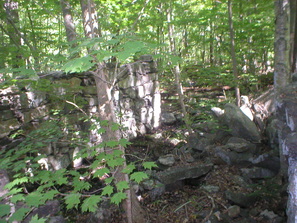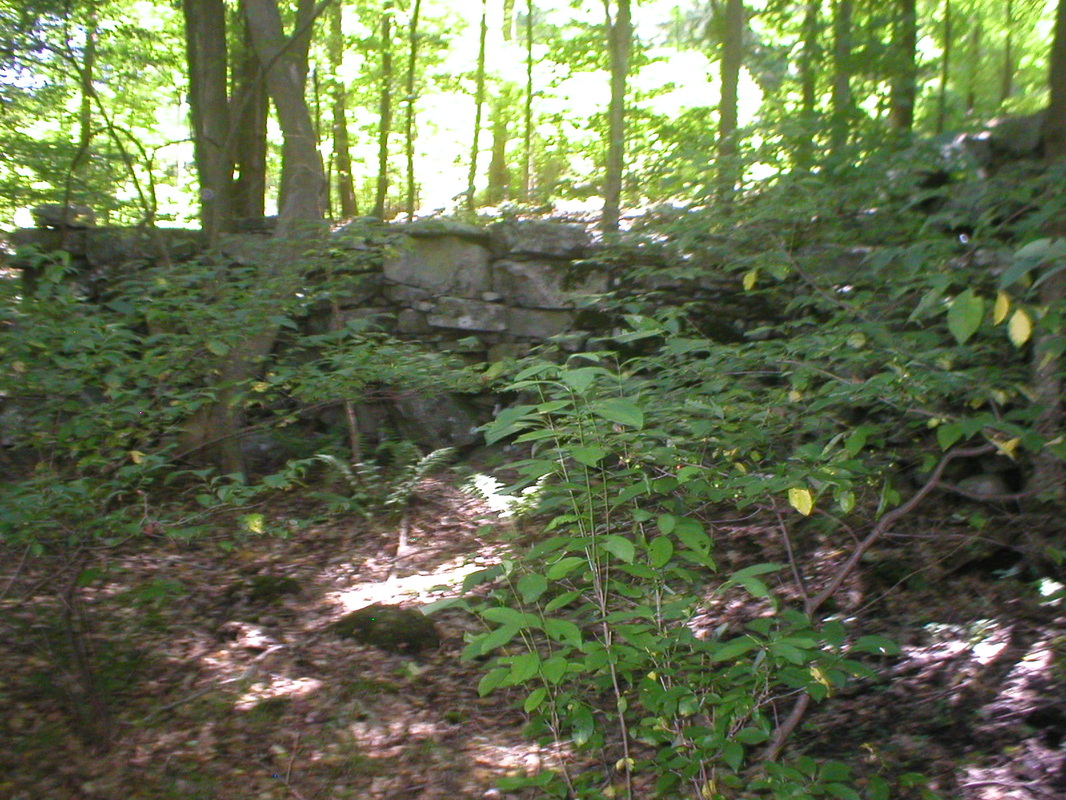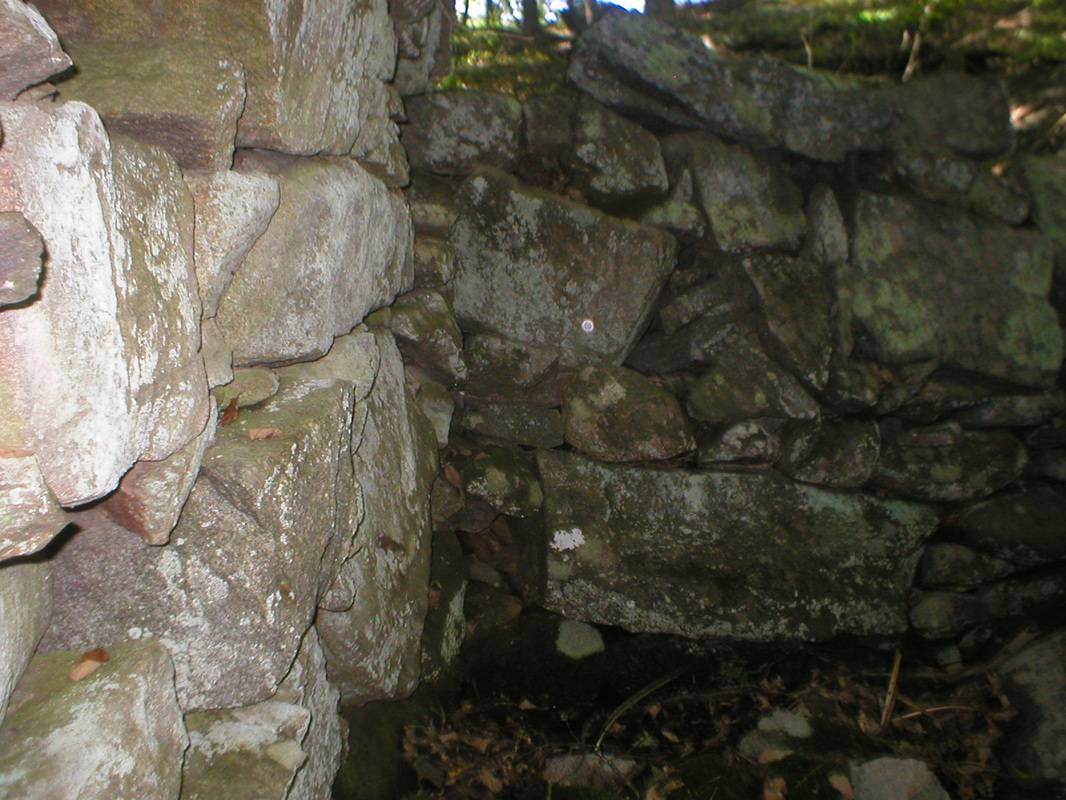button factory/saw mill, off route 74, willington hollow
 Saw mill site George's Brook
Saw mill site George's Brook
Waterway: George's Brook
Water power: Most likely an overshot wheel
Mill type: Saw and button factory
Water power: Most likely an overshot wheel
Mill type: Saw and button factory
History: About 800 feet upstream of Amidon’s mill on George’s Brook
was an unnamed saw mill and abalone button factory. At this writing it is
unclear as to who operated the saw mill.
While most Willington button factories produced the light ocean pearl
buttons, this mill produced deeper colored buttons from the abalone
shells. Little information exists on when the saw
mill was constructed. It was an early saw mill known to be in operation circa
1869. At this writing, additional information has been located. It will be
added when verified.
Site Characteristics: The mill used water power from a small pond on George’s Brook created by a 160 foot stone dam oriented in a north south direction. The pond area, clearly visible on 1934 aerial photos, is now totally filled in behind the dam and has returned to a wetland and field condition. Remnants of the dam and mill site buildings remain today. It is unclear if water power was used for this button factory in addition to the saw mill. The remnants of an old saw mill on the east end of the site and a dam upstream are clearly visible. The mill site was a fairly intricate site requiring an 800 foot sluiceway to power the mill. Its characteristics are indicative that the site may have supported additional mill activities. The construction methods used typical of those used in the late 1700s and early to mid-1800s suggesting that there may have been an early mill there.
Additional Sources of Information: Upcoming book on Willington’s Lost Mill Sites
Site Characteristics: The mill used water power from a small pond on George’s Brook created by a 160 foot stone dam oriented in a north south direction. The pond area, clearly visible on 1934 aerial photos, is now totally filled in behind the dam and has returned to a wetland and field condition. Remnants of the dam and mill site buildings remain today. It is unclear if water power was used for this button factory in addition to the saw mill. The remnants of an old saw mill on the east end of the site and a dam upstream are clearly visible. The mill site was a fairly intricate site requiring an 800 foot sluiceway to power the mill. Its characteristics are indicative that the site may have supported additional mill activities. The construction methods used typical of those used in the late 1700s and early to mid-1800s suggesting that there may have been an early mill there.
Additional Sources of Information: Upcoming book on Willington’s Lost Mill Sites


